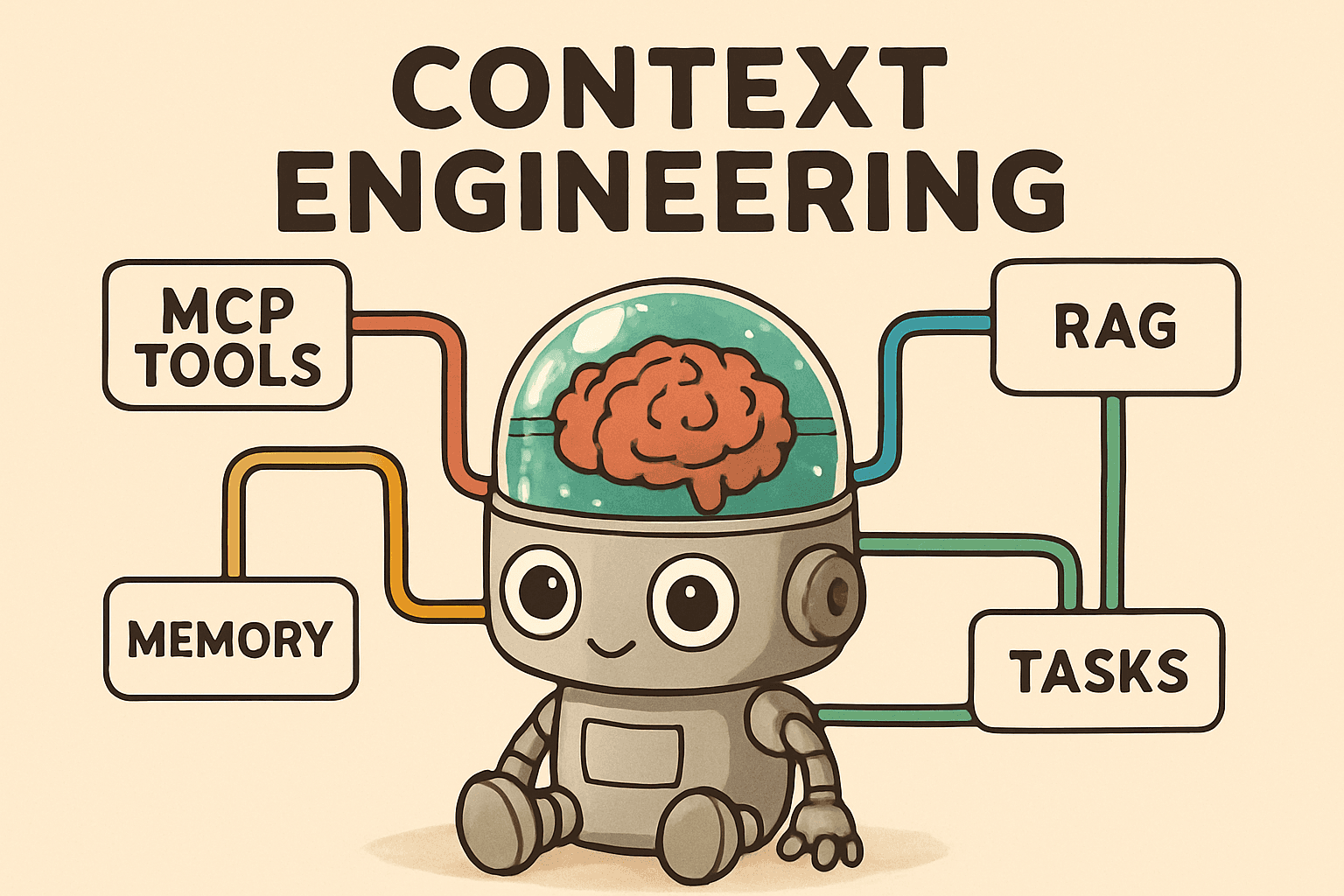
Context Engineering optimizes AI performance by architecting the digital ecosystem—including knowledge bases, retrieval tools, and prompt hierarchies—that shapes how AI interprets and executes requests. It prioritizes robust context frameworks over prompt phrasing, ensuring consistent, high-quality responses in production systems, making it essential for scalable AI solutions.
Prompt Engineering
Traditional prompt engineering focuses on phrasing a single input to elicit a good output. Context engineering goes much further. It is not an extension of prompt engineering but a distinct system-level discipline, creating a dynamic, state-aware ecosystem around the AI model. This means, feeding the model not just a one-off question, but a structured stack of information: previous conversation turns, retrieved documents, memories of past data, system directives, etc.
RAG - Retrieval Augmented Generation
Dynamically fetching relevant documents or database facts and including them in the model's input. Instead of relying solely on the model's internal knowledge, systems use search vector embeddings to find up-to-date information and feed it as context.
Memory and State Management
Keeping track of conversation history, use preferences, or other ongoing state. Memory modules may summarize or store past dialogue so the model can refer back to earlier points as context.
Prompt Chaining and Decomposition
Breaking complex tasks into subtasks and using intermediate outputs as new context. For instance, employing chain-of-thought prompts or multi-step pipelines ensures that relevant intermediate reasoning is passed along.
Context Pruning
Organizing or summarizing information to fit within the model's context window. This can involve summarizing long documents, chunking content or reformatting instructions so that the most relevant information is preserved under token limits.
From an architectural perspective, effective Context Engineering is crucial to maximizing the capabilities of AI models, particularly when designing custom AI Agents. This requires a comprehensive end-to-end system architecture that carefully addresses key requirements such as model deployment (local versus cloud-based), data sources (on-premises data versus remote cloud storage), latency constraints, and output formatting.
Essential architectural components include robust tools and infrastructure that support the AI Agent’s operation, such as Model Context Protocol (MCP) tools, custom or secure opensource MCP servers, and containerized MCP deployments using technologies like Docker. Additionally, leveraging a well-maintained or tailored agent framework is critical to ensure modularity and scalability. Incorporating persistent memory mechanisms to retain important context from previous interactions further enhances the agent’s ability to deliver coherent and contextually relevant responses.
Deployment is a critical aspect of AI agents and systems. Kubernetes stands out as the optimal solution, offering not only scalability and security but also flexibility. For example, you can integrate nodes from Google Cloud Platform (GCP) equipped with Nvidia GPUs to fine-tune models or host them locally. MCP servers can be deployed within Kubernetes clusters using ToolHive, a valuable tool for managing MCP tools tailored for AI agents. Within the cluster, AI agents and MCP servers communicate securely and efficiently, ensuring fast data exchange.
Effective deployment also requires robust DevOps practices, including Continuous Integration and Continuous Deployment (CI/CD) to streamline the AI agent development lifecycle. Monitoring tools like Helicone are essential for tracking model performance, managing costs. Additionally logging and conversation logs are crucial to maintain consistent functionality.
Key Points about AI System Deployment:
MCP Servers and ToolHive: